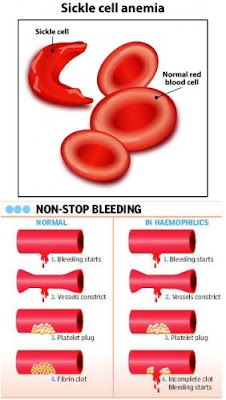SPM Biology 10 Transport - Erythrocyte
1. The circulatory system in human and animals consists of:
- Blood
- Blood vessels
- Heart
Composition of human blood
1. Blood = a connective tissue in liquid form.
2. The human blood is made up of:
- 55% plasma
- 45% blood cells
4. There are 3 types of blood cells:
- Erythrocytes (red blood cell)
- Leukocytes (white blood cell)
- Platelets
 |
| Blood composition |
Erythrocytes (red blood cell)
 |
| Erythrocyte (red blood cell) |
1. Biconcave disc-shaped.
- Increases the TSA/V ratio to facilitate the exchange of gases by diffusion across the membrane.
- Enables the erythrocyte to change its shape, so that it an squeeze through the narrow blood capillary.
- Enables the erythrocyte to contain more haemoglobin to carry more oxygen.
5. Erythrocytes survive for about 120 days and are then destroyed in the spleen and liver.
6. Each erythrocyte contains haemoglobin, a respiratory pigment containing iron and causes the blood to be red in colour.
7. Haemoglobin is responsible for:
- transport oxygen (oxyhaemoglobin)
- transport carbon dioxide (carbaminohaemoglobin)













